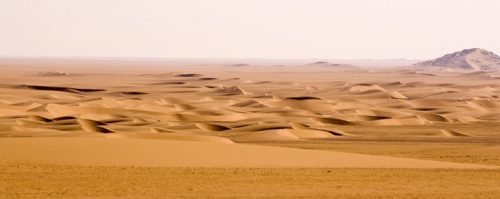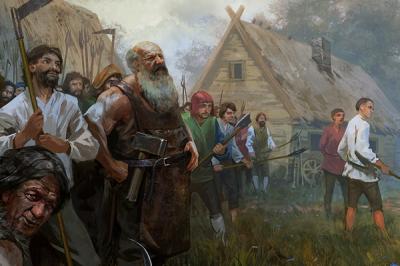Sandbox campaigns are always and endlessly fascinating subject when it comes to roleplaying games. They are widely regarded as the type of campaigns that uses the unique abilities and potentials of the RPG to the fullest. No matter how well designed, written, and scripted a videogame is, having a gamemaster who can take direct input from the players and completely reshape the game world in response in a matter of seconds is somethings computers can not even approach to replicate. You can have very fun and entertaining adventures following a general chain of events and visiting locations according to a script, but to many this has a somewhat unsatisfying taste of wasted potential.
A sandbox campaign is the ultimate form of interactivity. The players can attempt any action they can think of and change any aspect in the world as long as the GM deems their attempts a success. You will never see the notification “you can not use this here”. The only way to really push the boundaries of a sandbox is to travel off the edges of the map. But even that could be fixed by giving the GM a few week to create more map. (Your GM will hate you for this, though. Have a heart and don’t do this.)
One challenge when talking about sandbox campaigns is the unclear terminology. There’s no kind of even informal authority among OSR gamemasters and designers. It’s true anarchy where terms become accepted because the majority uses them in the same way. But even then, you usually won’t find any clear definition. And to make things worse, people are using terms in the way they think they should be used, even if they are in a minority. Very often sandbox is used seemingly synonymous with hexcrawls. And after having been interested in this wider subject for years, I am only now starting to get an idea what hexcrawling actually means to the people who actually run succesful hexcrawl campaigns. (Those who complain that their hexcrawls sucked are usually told that they had a wrong impression of the concept.)
A week back I had started a thread about sandboxes at rpg.net, and wanting to make it clear that I wasn’t interested about either hexcrawls, domain building, or diplomacy sandboxes, I came up with the description of “dynamic sandbox”. One of the early replies was from someone who immediately got what I was getting at, who also mentioned that in Sweden they call them the equivalent of “fishtank”.
And I think fishtank is a brilliant term that really should get widespread use in our English RPG terminology as well. It just hits the nail square on the head. A fishtank is a kind of sandbox campaign (that is: no script, players set their goals), but one that is focused on and build around various factions and important people. The big fishes and the little fishes. And these are all swimming around in the fishtank, doing whatever fish business they have. The players are introduced into this environment – usually as the smallest of fishes – and mingle with the various other big and small fishes that already inhabit it. It’s the relationships between these important parties and players that the campaign is really about.
A fishtank campaign can have a hex map. Just like a hexcrawl or a domain building campaign. But it can also just as well be run using a point map, or a city street map. Since my Old World setting is a wilderness setting and I am more of a Sword & Sorcery than a survival or expedition guy, my personal choice is a point map that lets me easily track travel times with just a few lines and squares and without the need to create a sophisticated geography. (I think I’ll have to do a full post about this later this week.)
I’ve never seen the term fishtank used for this type of campaign, but I think it’s almost self-explaining to people who know the basic idea of sandboxes. It’s a sandbox of various actors doing their various things and fighting out their conflicts, and the players are joining them. As this is just the kind of sandbox campaign I have always been envisoning since I became familar with the concept, I am really hoping that it might gain a widespread acceptance. And maybe help more people become aware that a sandbox does not have to be a (poorly run) hexcrawl. I will certainly be using it to describe my campaign in the future.
Looking a bit around, I found the term fishtank referenced before in two posts at Gnome Stew. By a Finish author. Figures.


